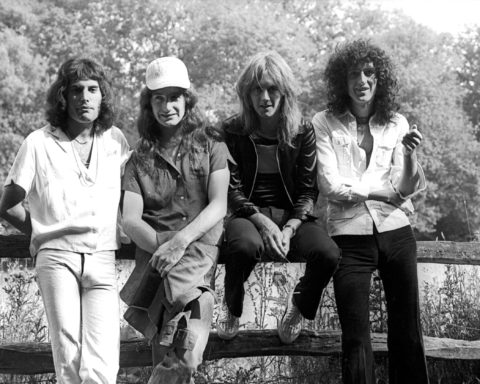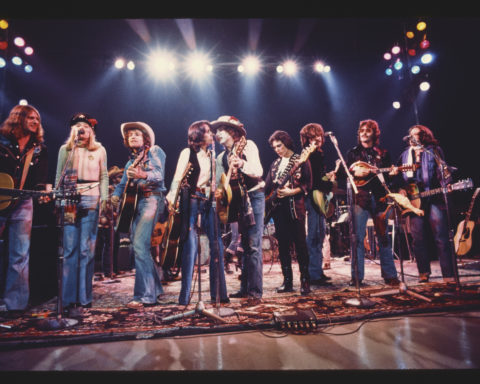California Typewriter
(USA, 104 min.)
Dir. Doug Nichol
There’s a great scene in Fred Zinneman’s Julia featuring Jane Fonda and a typewriter. Fonda, playing writer Lillian Hellman, becomes frustrated while typing at her machine. She gives the typewriter two middle fingers and yells at it. Then she tosses it out the window.
This scene from Julia, unfortunately, doesn’t make its way into California Typewriter, but director Doug Nichol affectionately eulogizes this machine that drove writers mad for over a century. The doc illustrates the many pleasures of this increasingly obsolete relic from the analogue age through a variety of interviews and anecdotes. Despite Fonda’s iconic frustration, there are unsung joys of unplugging and banging out some words on the keys of the typewriter. California Typewriter highlights the ways in which these devices add character and personality to words in ways that computers do not.
Take, for example, the sound. That metallic click-click-click of the typewriter registers a different passion than the dim clack-clack-clack of a keyboard. A typewriter expresses the emotion and energy of the writing process in ways that a computer does not with every ping and whir of the ribbon noting another line of inspiration.
California Typewriter begins with a great sequence that speaks to the death of the typewriter as author Mason Williams recalls a well-intentioned homicide in which he and photographer Ed Ruscha tossed an unsuspecting Royal typewriter from a speeding car. His poetic words accompany images of the grisly crime scene as keys, sprockets, and shattered bits litter the highway like remnants of road kill torn apart by vultures. A typewriter is a cold machine, not a living thing, yet people have strange attachments to objects as the film and experiment shows. Nothing in California Typewriter quite lives up to this sequence, but the film shows how Williams’ achievement just wouldn’t have the same effect as smashing a worthless Toshiba laptop on the road.
Nichol explores why people still cherish the typewriter when computers have far more bells, whistles, and practical uses. Storekeeper Ken Alexander, who owns and operates the store California Typewriter that lends the film its name, speaks about this one-trick pony with great passion. The few customers who enter the store, particularly at a well-attended “type-in” for typewriter enthusiasts, articulate the benefits of connecting with a device that encourages them to slow down, relax, and take pleasure in the one simple task at hand, as opposed to annoying digital devices with their endless notifications. While Alexander’s business resembles a practice of collecting and repairing antiques, preserving these relics of the analogue world is important in the age of digital overkill.
California Typewriter features some celebrity talking heads, too, like singer Jon Mayer, late actor/playwright Sam Shepard, and actor Tom Hanks (an unexpected typewriter enthusiast) who echo the perks of the typewriter. Mayer, for example, likes the tactility of the writing process and the evidence it leaves of his artistic journey. He recalls images of Bob Dylan perched over a typewriter or archives filled with papers featuring drafts with notes and scratched out ramblings. Computers and hard drives only store the words and information, but show no traces of the passion entailed in the creative process. Shepard likens the typewriter to a device that keeps the writer in tune with space and time since it keeps one absorbed and focused with the rhythmic keys noting the progress of his work. Hanks, on the other hand, relishes the personable elements of connection that a typewriter affords, like the pure physical evidence of a letter typed on paper using keys that speak in the personality of the device that creates them. Unlike an impersonal and breezy email, the paper impression shows that one cares.
Some interviewees put the typewriter on a pedestal while others appreciate the machines while acknowledging that changes in technology are simple facts of life. California Typewriter sometimes romanticizes the writing process with its look at analogue wordsmiths who type away on the keys. The film attributes a kinds of street cred to typists with John Mayer especially implying that anything produced on a laptop is Internet café posing. There are many impractical uses for a typewriter that the doc either downplays or declines to consider, like the pace of distributing print versus digital and the great proliferation of voices enabled by new technology.
Hanks is one of the few interviewees who speaks about typewriters pragmatically. He acknowledges that the best models of them have come and gone. The remaining objects should be used and operated, not admired or elevated like collectibles amassing dust on the shelf.
California Typewriter introduces a unique artist who also sees the typewriter as something to be used and cherished—not as a writing tool, but as a work of art. Jeremy Mayer, like Mason Williams, rips the typewriter apart and finds inspiration in its metallic entrails. The doc shows Mayer creating some beautiful statues and objects out of these pieces, like a large deer made in tribute to his father or a gigantic lotus blossom that pays homage to the Mumbai factory that produced the last typewriter in the world during the course of this film.
Mayer’s art lets one consider how obsolete objects may find new life outside the junk heap. California Typewriter approaches the life and character of the typewriter from a variety of angles and explores how certain objects let one step back from the overwhelming energy of the digital world. Typewriters themselves aren’t the tools to cure the digital divide, but they provide solace for some who like typing away in the key of life.
California Typewriter opens in Toronto at Hot Docs Ted Rogers Cinema on Friday, Oct. 27.
Director Doug Nichol and film subject Martin Howard will attend for Q&As on Friday, Oct. 27 (7:30 p.m.) and Saturday, Oc. 28 (7:30 pm).










